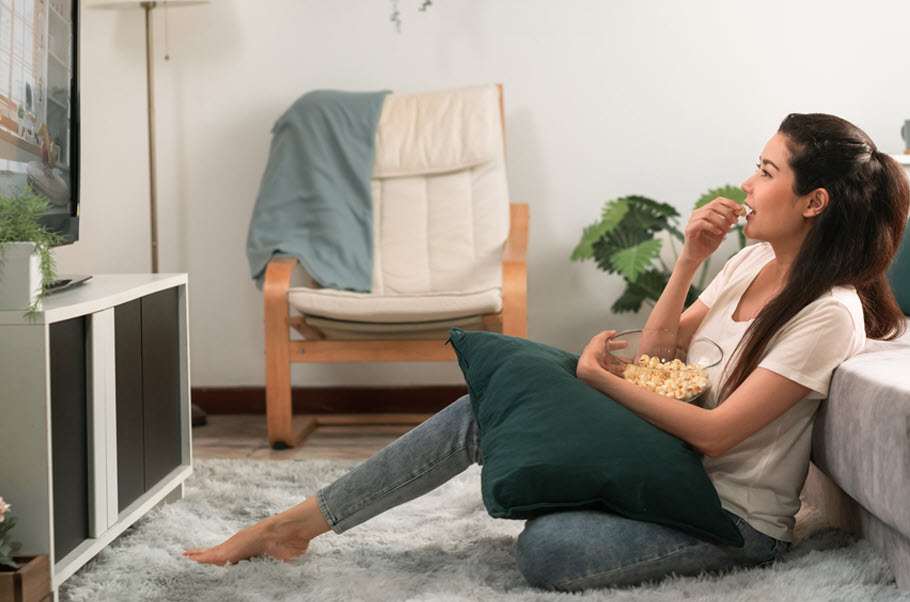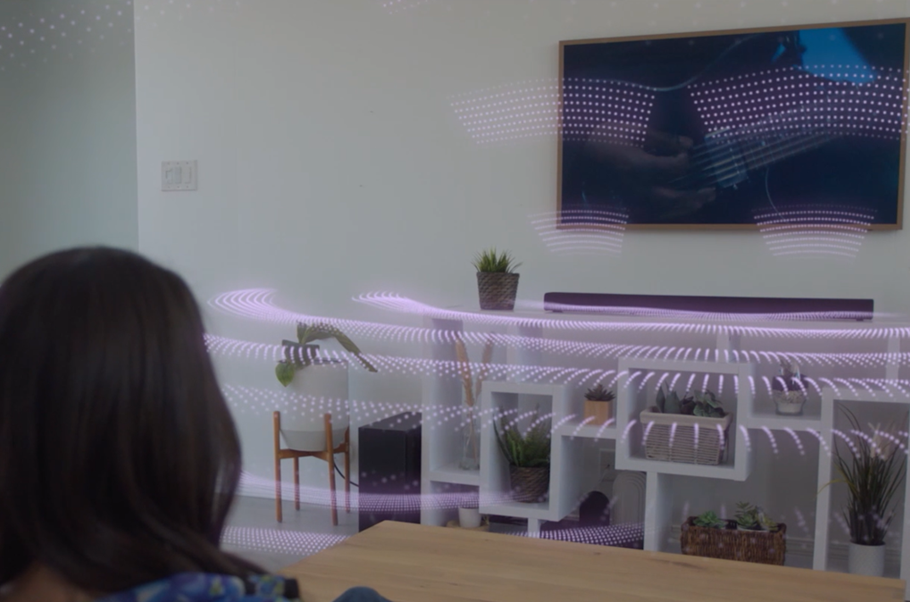Picking the Best TV for Your Space
Here’s what you need to know before you make your purchase.
How do you select the best TV for your space? There are so many options out there, it can get confusing. You also have to think about how large the TV should be, where and how high it should be placed, and how you will mount it if you end up deciding it should go on a wall.
In this article we’ll demystify all these factors so you can simply kick back and enjoy some great shows and movies on your new TV.
Think Big
In my experience as an installer, I never get complaints from a client that their TV is “too big.” On the other hand, I’m often asked to swap out smaller sets for larger ones. So, to avoid annoying trips back to the store, re-stocking fees, or dealing with painful return processes — think big!
How big are we talking about? Since TVs are very high resolution nowadays, you can get very close to the screen without seeing pixels. The accepted formula for minimum viewing distance (1.5x the screen width) reveals that you only have to be about 8.75 feet away from an 85″ diagonal display. I’m guessing this is probably much closer than many people think.
I always recommend putting some blue tape on the wall to simulate the outer dimensions of a TV — a cheap and easy exercise — before you finalize the size of the set you’re going to buy. By doing this, you will likely find that the TV you thought was “too big” still looks kind of small on the wall. If you are waffling between two sizes (a 75″ and 85″ model, for instance), my advice is to always purchase the larger size if you can afford it.
One last important note: TV manufacturers always list two heights: without stand and with stand. Use the “without stand” number if you plan to mount the set on a wall; use “with stand” if you intend to sit it on top of a piece of furniture.
The Room Dictates the Size
An important consideration for TV selection is how wide the room is. If you have some important seats that are off to the side of the TV and not directly in front, you may want to select an OLED model instead of a standard LCD one. These TVs have a wider viewing angle, so those folks off to the side won’t experience a darker image just because they are not in the prime seat. OLEDs are typically premium quality, so you are not just paying for the wide-angle capability, but also for better black levels and a more dynamic and detailed image. In my opinion, they’re worth the extra bucks.
Needless to say, bigger spaces like the family room, rec room or home theater require bigger TVs. The minimum size set I recommend for those locations is 65″, but most of these types of rooms can accommodate a 75″, 85″ or even 100″ TV pretty easily.
Locations like an office or home gym will generally require somewhat smaller TVs — usually in the 55″ to 65″ range — as will main bedrooms if space permits. Guest bedrooms are often outfitted with smaller models (43″ to 55″) while kitchens only require compact TVs in the 24″ to 32″ range. Mind you, these are just typical home guidelines. If you happen to watch a lot of movies in your bedroom or office, by all means go bigger!
How High?
This is something a lot of folks get wrong. In today’s home designs, there are less and less places to put a TV … and most of the available areas are not great. For example, a typical family room design uses the fireplace as a focal point and has a ton of windows. This forces you to put the TV above the fireplace, which is always too high. For optimum comfort (and minimum neck strain), your eyes should be level with the middle to the bottom third of the screen when seated. This is the most comfortable viewing angle for the human body. In other words, a 65″ TV should be mounted so that the bottom of the TV is roughly 26″ off the ground.
A typical fireplace mantel, on the other hand, is 60″ off the ground — far from ideal. So get that TV as low as possible when room design permits. That said, you need to keep in mind any potential obstacles that could obstruct the view — things like coffee table knick-knacks, bed footboards and other furniture. Make sure they are not going to block any part of the screen at your selected TV height and viewing position.
In addition, for optimum audio, you’ll want to add a sound bar, which should be placed as close to seated ear level as possible. This typically dictates that the sound bar be positioned under the TV. For that reason, you’ll need to take its dimensions into consideration before finalizing your TV height. (Note that, like TVs, most sound bars can be mounted on a wall or placed on top of a piece of furniture.) For more information about mounting a TV and sound bar, check out this blog posting.
Mount Up
Finally, there’s the important decision about whether you should mount your TV on the wall or simply put it on top of a credenza or other piece of furniture. The answer largely depends on the desired height and the aesthetic you are going after, as well as any physical restrictions. For example, if you’re an apartment-dweller, you may not be able to drill into the wall to hide wires … or you may not have an electrical outlet on the wall where you want to put the TV. In that case, using a piece of furniture instead of wall-mounting may be your best bet.
If you do decide to mount the TV on a wall, you need to select a bracket type. There are three options here: tilt brackets, articulating arms and simple flat brackets. A tilt bracket is a must if for some reason you need to mount the TV very high up (for example, above the fireplace, as previously discussed). This will give you the flexibility to angle it downward. Unfortunately, these brackets are a little on the thick side, so your TV will stick off the wall an extra inch or so compared to a flat bracket. If your room has multiple viewing locations, then an articulating arm makes sense, but this is an even thicker bracket and will make the set stick off the wall an additional 3-4 inches. Assuming you can mount the TV at the correct height, and you have only a single primary viewing position, a flat bracket is the lowest cost, thinnest and best option.
Choosing the right TV — in terms of both size and location — allows you to create an immersive home viewing experience. Integrate it with a quality audio system for an equally immersive listening experience and you’ll have every angle covered … literally.















